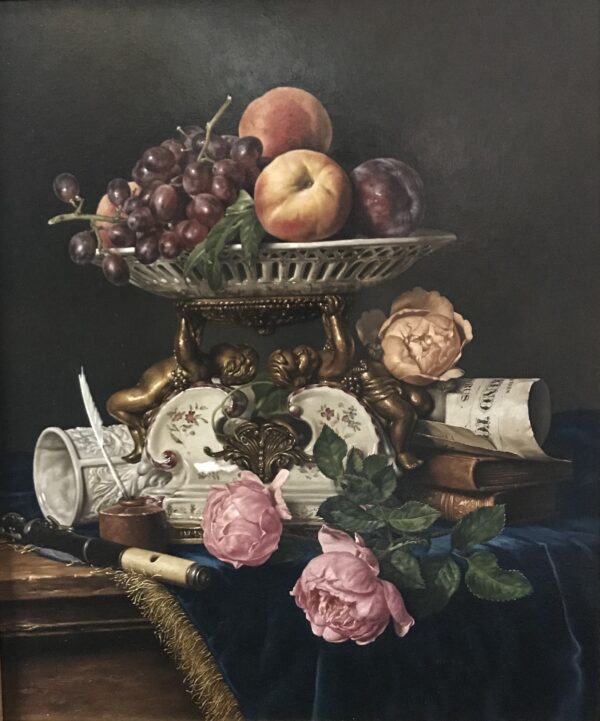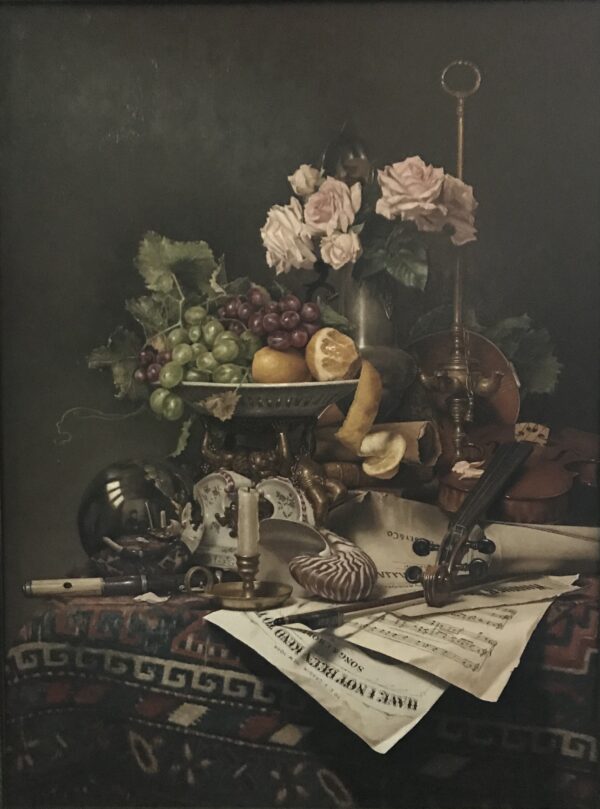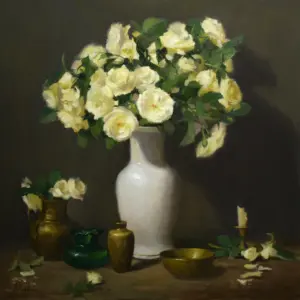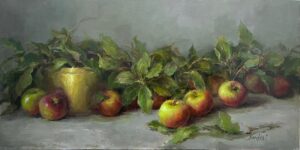Still Life Painting
The following video is by Elizabeth Robbins, a renowned still life artist. In this video Elizabeth shares her interpretation of still life painting and a look into her process.
Video Transcript ^
As a professional artist, I feel very passionately that one should have an emotional connection to the subject matter they paint. For me that would be flowers in every from. I always dreamed of having a studio where I could just walk out and cut my flowers and be inspired for the next painting. Over the years my garden has grown to over 100 rose bushes. I have peonies, day lilies, lilacs, fruit trees and many types of sunflowers grown from seed each year.
I wanted to portray the spirit of the sunflowers even after they lose their petals. For me it symbolizes vanities – the cycle of life and death. Even though as we get older we “lose our petals” we are beautiful in every stage.
The process starts of course by walking into my garden and cutting the flowers. Arranging and choosing a vessel requires considered thoughts and decision. When deciding what to include, I think about color harmony and mood. Once I have the set up complete, the painting process begins with a rough sketch. From there, I block in shapes and colors quite loosely and abstractly and build from there to create a beautiful painting that has emotion and can stand the test of time.
I hope you’ve enjoyed the process of creating “The Harvest”
Still life paintings are a genre of art that depict inanimate objects, done inside and outside with materials arranged on a table or other flat surface. These objects can vary widely and may include fruits, flowers, food items, household items, ceramics, glassware, and textiles, among others. The term “still life” is derived from the Dutch word “stilleven,” which became popular in the 17th century in the Netherlands during the Dutch Golden Age of painting by the Dutch Masters which included Johannes Vermeer and Rembrandt.

Since ancient times
Still life paintings can be traced back to ancient times, but they became particularly popular in the Impressionist period by artists such as Claude Monet, Pierre-Auguste Renoir, and others. Still life paintings were often used to showcase the skill of the artist in capturing texture, light, and form.
During the 17th century, still life paintings often contained symbolic elements that conveyed deeper meanings or moral messages. For example, vanitas still lifes included objects like hourglasses and extinguished candles to remind viewers of the transience of life.
In the 19th century, still life painting continued to evolve, with artists like Paul Cézanne experimenting with new techniques and styles. Cézanne is known for his innovative approach to composition and form, which laid the groundwork for the development of modern art.
Throughout the 20th and 21st centuries, still life painting has remained a popular genre among artists. Artists continue to explore new themes, styles, and techniques within the genre, creating still life paintings that range from traditional and realistic to the myriad styles of the still life artists of today.
Today, still life paintings can be found in museums, galleries, and private collections around the world, showcasing the enduring appeal and versatility of this timeless genre.





